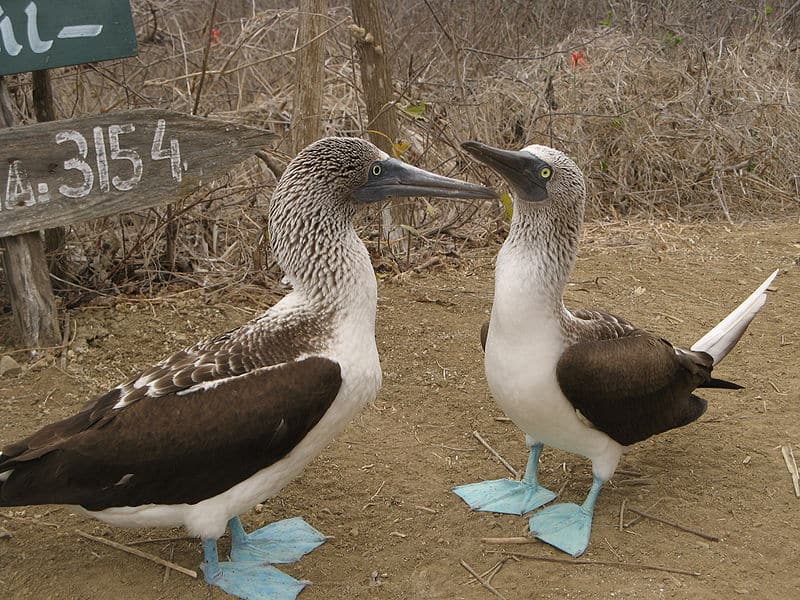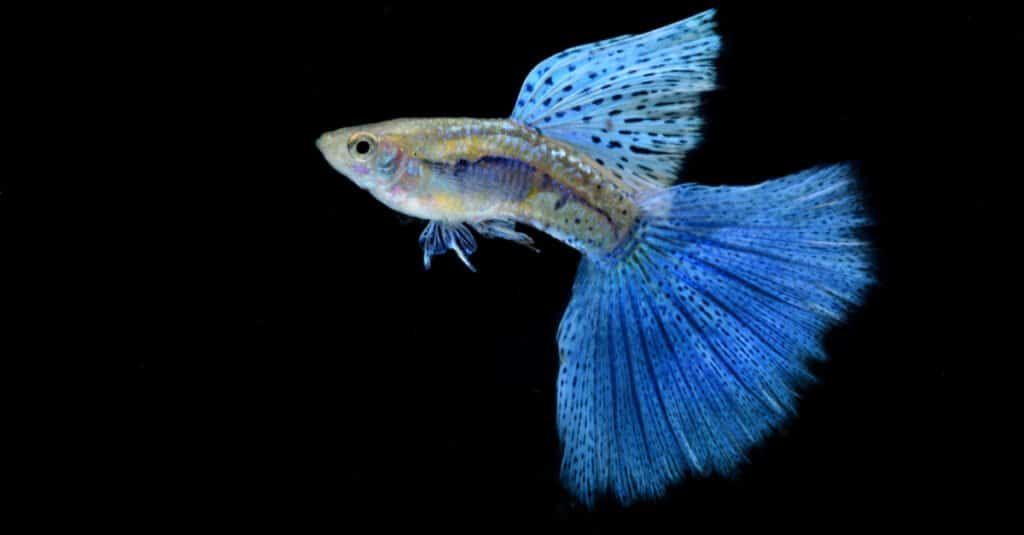Animals are hermaphroditic if they have organs for both sexes in the same body. On the other hand, animals are monomorphic if there are no distinguishable differences between sexes. What is sexual dimorphism in animals and what are some examples of it occurring in nature?
Animals that reproduce sexually must have two different sexes. These differences often go beyond a difference in genitals and reproductive organs and affect visible characteristics or patterns of behavior. The needs of these differing sexes vary depending on parenting styles, environments, gestation periods, power structures, and other factors.
What are some examples of sexual dimorphism in animals? We’ll define sexual dimorphism, list animals that express sexual dimorphism and discuss some of those animals in detail.
What is Sexual Dimorphism in Animals?
Sexual dimorphism is when individuals of different sexes within a species are different from each other. With sexual dimorphism, both sexes have morphological variations.
Traits like eye size, fur color, plumage length, and height are examples of differences that result from sexual dimorphism. These differences must extend beyond a difference in sexual and reproductive organs.
Examples of Sexual Dimorphism in Animals
It is impossible to make a comprehensive list of animals with sexual dimorphism on earth. As a generalization, invertebrates show less sexual dimorphism than vertebrates. Some of the most famous examples of sexual dimorphism are with birds.
Sexual Dimorphism exists in these animals and more:
- Wolf Spider
- Mandrill
- Mosquito
- Mandarin Duck
- Sperm Whale
- Deer
- Big Horned Sheep
- Blue-Footed Booby
- Antelope
- Bird of Paradise
- Parakeet
- Chimpanzee
- Guppy
- Gorilla
- Triplewart Seadevil Anglerfish
- Grouse
- Ring-Necked Pheasant
- Peafowl
- African Lion
- Elephant Seal
- Anole
- Orchid Mantis
- Hyena
How Does Sexual Dimorphism Happen?
Sexual dimorphism happens as a part of evolution. Natural selection determines the makeup of males and females. Since the sexes face different challenges in ecosystems, they evolved differently.
Frequently, evolution favors reproductive success and not the longevity of a single organism. Things that aid in reproductive success, like bright colors in some birds or antlers on deer, aren’t necessarily practical. They evolved because traits like these are essential to the mating process.
The drive to pass on desired traits leads animals to seek specific mates. These traits may be based on appearance, size, sounds, or behavior. Other times, sexual dimorphism is driven by sexual selection, which leads to rapid diversification.
Blue-Footed Booby (Sula nebouxii): Vocalization and Parenting Sexual Dimorphism

A pair of blue-footed booby (Sula nebouxii) in Isla de la Plata, Ecuador.
The blue-footed booby is an example of sexual dimorphism caused by parenting. Males and females are similar in appearance though females are noticeably larger. There is also sexual dimorphism demonstrated by the consistent differences in vocalizations between females and males.
Rearing chicks differently allows the blue-footed booby to achieve maximum reproductive success. When times are lean, a booby breeds smaller males who require less to survive. Females are produced when there are more resources to sustain them.
Orchid Mantis (Hymenopus coronatus): Imitation and Sexual Dimorphism
This mantis has a survival strategy that depends on imitation. Females are ornate and resemble an orchid, so they’ll attract large pollinating insects that they eat. Males rely on ambushing their meals.
Females are almost stationary and large. Their large size allows them to create more offspring than a smaller body accommodates. Males are smaller, so they can travel between females to mate.
Guppy (Poecilia reticulata): Aquarium Sexual Dimorphism

Sexual selection driven by females favors male guppies with the longest tails.
©Nantawat Chotsuwan/Shutterstock.com
Those familiar with beginner freshwater aquarium setups know that guppies breed like crazy. Females are large and grey, while males are smaller with flowing patterned tails. That’s because females like the males with more adornment.
Female guppies also prefer mates that put on a good mating display. This mating display is most successful among males with the longest tails. Sexual selection driven by females favors male guppies with the longest tails.
Triplewart Seadevil Anglerfish (Cryptopsaras couesii): Parasitic Sexual Dimorphism
These deep-sea fish have a parasitic sexual relationship. Because of this, females are up to a foot long while males usually tap out at half of an inch in size. Females weigh up to half a million times more than males.
Males have much better eyesight than females and have a great sense of smell. This helps them locate females in the pitch black of the deep ocean. Once they find a female, males latch on and never let go.
They don’t just mate with females as males become a part of females. Their body becomes attached to that of their mates through circulatory systems, intermingling tissues, and bonded skin. The male essentially becomes a sperm receptacle for the female and females may have numerous parasitic mates.
Ring-Necked Pheasant (Phasianus colchicus)
Ring-necked pheasants are common, and the differences between males and females are apparent. Males are deeper in color with long tail feathers, colorful necks, and bright faces. They use their adornments to put on behavioral displays meant to entice a female.
Females are dull in comparison. They’re usually brown with patterning, shorter tails, and no adornments. Hunters in the United States are only allowed to target male pheasants, which the birds make easy due to their conspicuousness.
Peafowl (Pavo cristatus)
Peacocks are male peafowls that are known for their gorgeous display of feathers. These feathers trail behind males when they are not fanned out for the object of their affection. The male form is impractical, but it’s needed for their special dance used when courting a female.
These males are flamboyant in comparison to their subdued mates. Female peahens are muted colors like brown and grey.
Bird of Paradise (Paradisaeidae): Sexual Dimorphism for Courtship
Sexual dimorphism in birds of paradise is driven by the need for courtship. Because they have no predators in their ecosystem, males have elaborate plumage accented by long tail feathers. Their health is also on display based on the quality of their adornments.
Birds of paradise are a family of birds that live from Australia up through Indonesia. Each species is uniquely different in how they look.
Potential mothers pick the best-looking males so their offspring will attract mates. This process of mating leads to a quick evolutionary process. There are 42 different species of birds of paradise diverging from an ancestor that existed only 24 million years ago.
Is There Sexual Dimorphism in Humans (Homo sapien)?
Yes, there is sexual dimorphism in humans though these differences aren’t as dramatic as in most wild animals. There is a 15% average difference in body mass in favor of human males as opposed to a difference as high as 50% in male orangutans.
Up Next
The photo featured at the top of this post is © BlueOrange Studio/Shutterstock.com
Thank you for reading! Have some feedback for us? Contact the AZ Animals editorial team.






